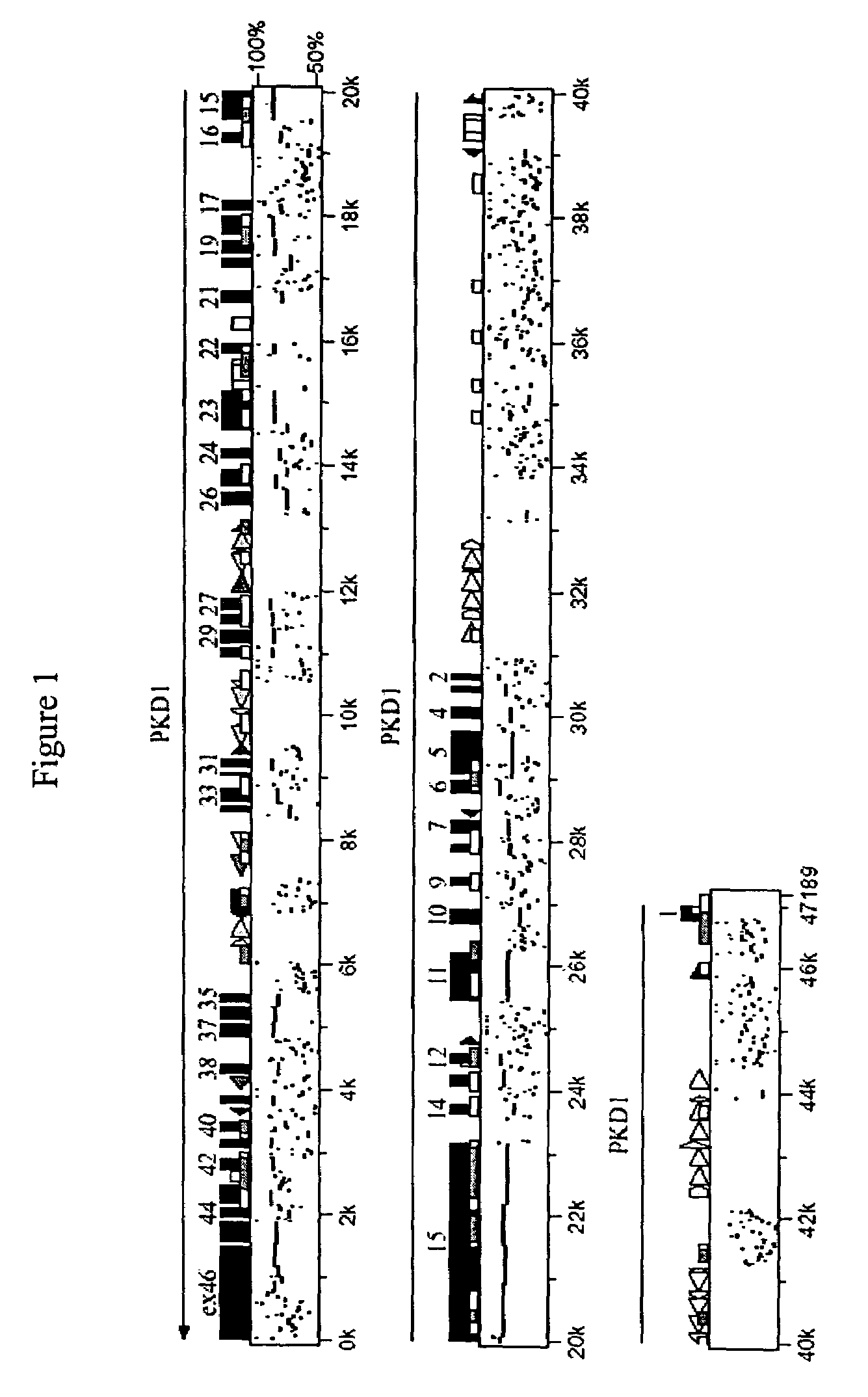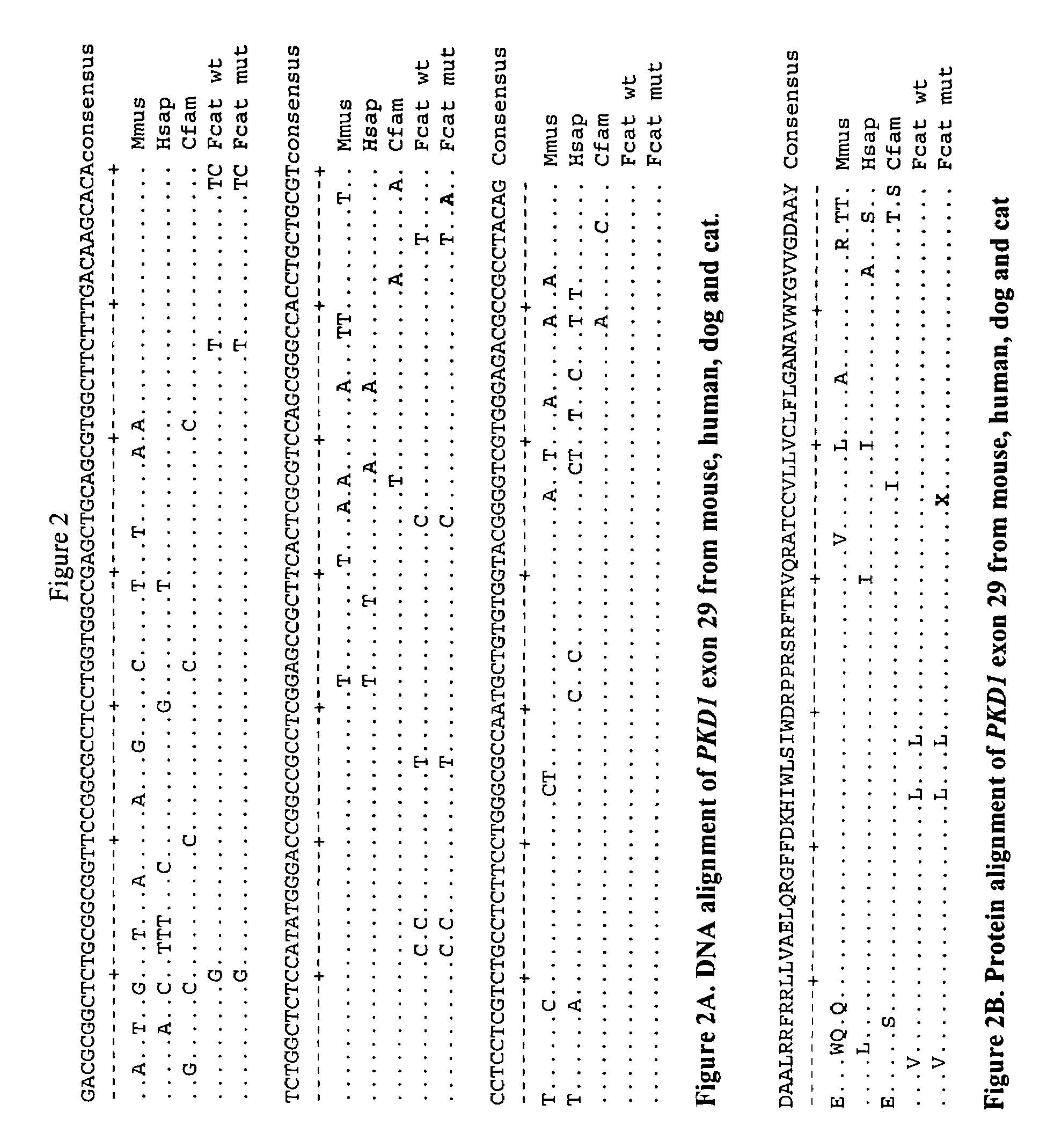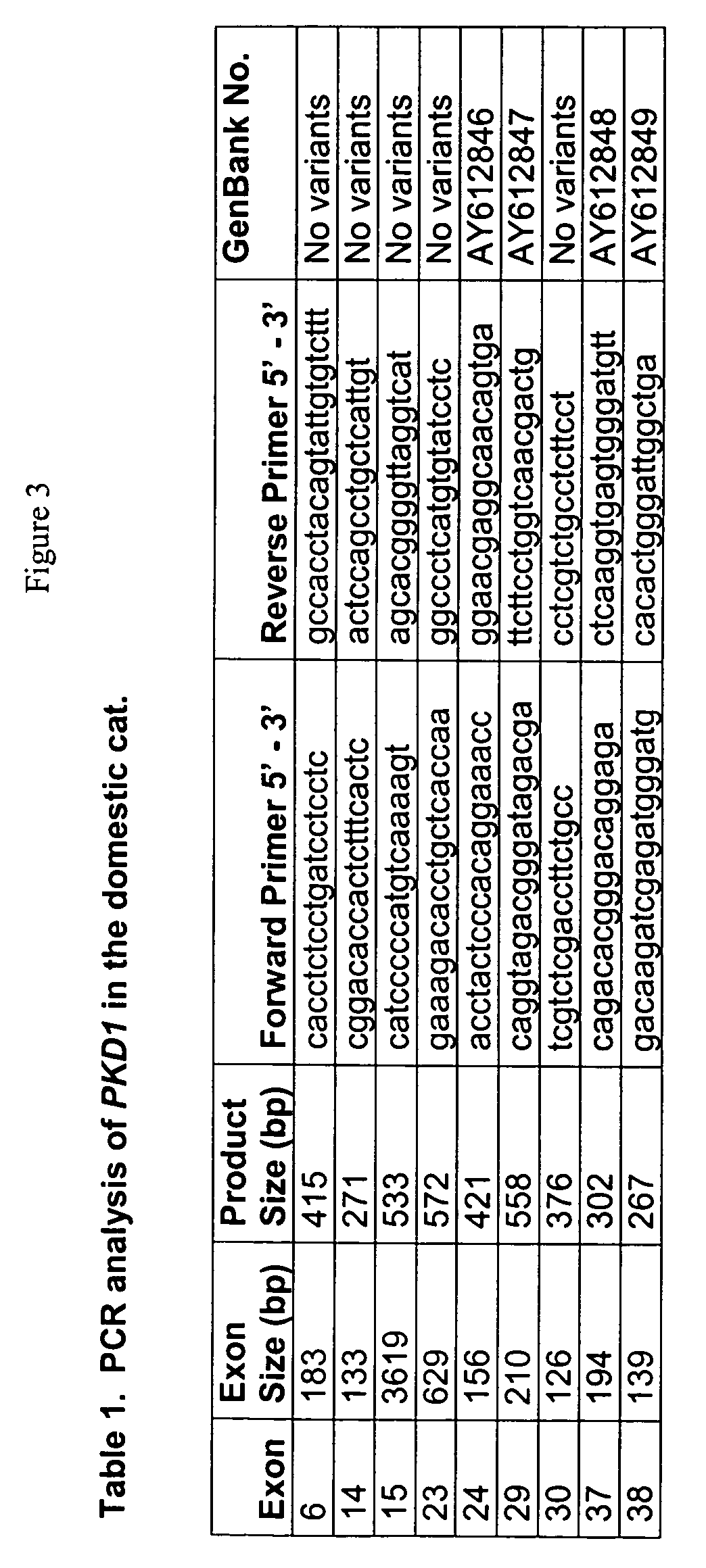Carrier tests for polycystic kidney disease in the cat
a carrier test and cat technology, applied in the field of carrier tests for polycystic kidney disease in the cat, can solve the problems of hampered efforts to study pkd, lack of reliable model system, and high cos
- Summary
- Abstract
- Description
- Claims
- Application Information
AI Technical Summary
Benefits of technology
Problems solved by technology
Method used
Image
Examples
example 1
Materials and Methods
[0227]Sample Identification: Samples from cats representing families segregating with PKD were collected from five feline PKD ultrasound screening clinics that were held at the University of California, Davis (UC Davis), School of Veterinary Medicine between June 2000 and September 2002. Details regarding the disease criteria and the pedigrees developed from these clinics have been previously described (Young et al., Mammal Genome (2004)). Representatives from each pedigree were genotyped for the PKD mutation including 36 affected and 20 unaffected Persians and 33 individuals in feline PKD family 7. PKD cases from other breeds including Siamese, Exotic Shorthair, Domestic Shorthair (N=1 each), Selkirk Rexes (N=3), Scottish Folds (N=2), and Ragdolls (N=3) were identified by the authors (DJB) and from the UC Davis ultrasound screening clinics.
[0228]BAC clone Sequencing: The sequence of the feline BAC clone (GenBank Accession: AC145332.28) containing the feline PKD...
example 2
Identification of Mutation in PKD1
[0232]A linkage analysis for feline PKD was performed by genotyping forty-three feline-derived microsatellites in seven extended feline pedigrees segregating for PKD (Young et al., Mammal Genome (2004)). The results showed a significant linkage and no recombinants (Z=5.83, θ=0) between feline PKD and the microsatellite marker, FCA476, that is within 10 cR to the PKD1 gene on cat chromosome E3 (Young et al., Mammal Genome (2004)). This data suggested an analysis of PKD1 for a causative mutation for the domestic cat. Additional microsatellites were identified from a BAC clone containing the feline PKD1 gene, which had been identified from the RPCI-86 cat library (Grahn et al., R, Biller D, Young A, Roe B, Qin B, Lyons L: Genetic testing for feline polycystic kidney disease, submitted, 2004). These analyses showed no recombinants between these markers and the disease and exclusion to markers associated with PKD2, further supporting that the feline PKD1...
PUM
| Property | Measurement | Unit |
|---|---|---|
| Tm | aaaaa | aaaaa |
| temperature | aaaaa | aaaaa |
| temperature | aaaaa | aaaaa |
Abstract
Description
Claims
Application Information
 Login to View More
Login to View More - R&D
- Intellectual Property
- Life Sciences
- Materials
- Tech Scout
- Unparalleled Data Quality
- Higher Quality Content
- 60% Fewer Hallucinations
Browse by: Latest US Patents, China's latest patents, Technical Efficacy Thesaurus, Application Domain, Technology Topic, Popular Technical Reports.
© 2025 PatSnap. All rights reserved.Legal|Privacy policy|Modern Slavery Act Transparency Statement|Sitemap|About US| Contact US: help@patsnap.com



